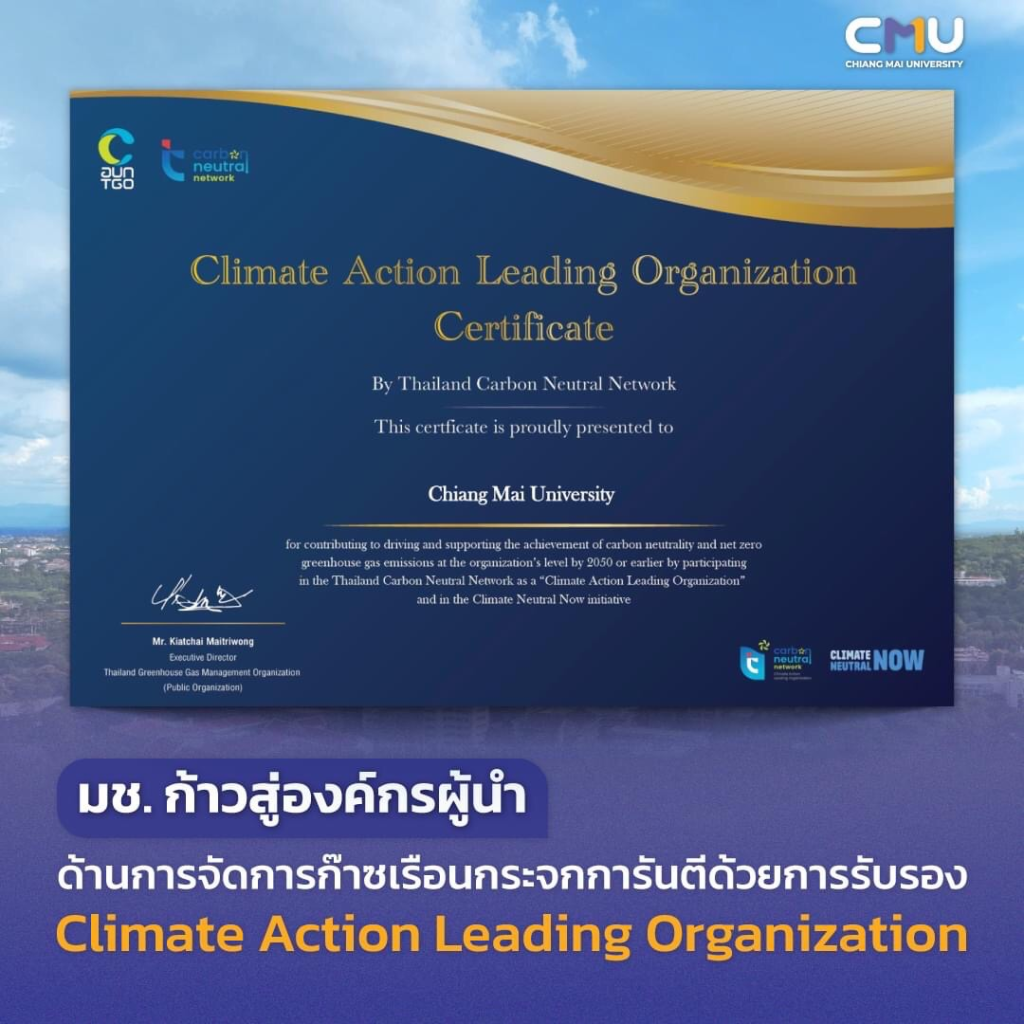Management of the SODU Project for Carbon Neutrality at Chiang Mai University (Carbon Neutral University)

1. Principles and Rationale (Summary):
The plan is a strategic initiative aimed at driving Chiang Mai University as a whole to effectively respond to national strategies and the needs of stakeholders at both regional and national levels. The vision of Chiang Mai University is defined as “A leading university committed to sustainable development through innovation.” One of the thirteen strategies outlined in the plan is to propel Chiang Mai University as a model educational institution dedicated to becoming a Carbon Neutral University. This entails reducing net greenhouse gas emissions to zero by leveraging and continuing the university’s ongoing efforts for future transformative changes. It aims to actively contribute as part of the global solution for sustainable development.
2. Objectives:
For the management of the SODU project in the transition towards the Carbon Neutral University of Chiang Mai University, it is responsible for tasks ranging from project management, coordination, supervision of project execution according to the plan, performance evaluation of the project, to the establishment of a researcher database.
3. Target Groups:
4. Target Area:
Energy Research and Development Institute – Nakornping, Chiang Mai University.
5. Steps of Operation:
Fiscal Year 2023


Fiscal Year 2024

Fiscal Year 2025

Fiscal Year 2026

Fiscal Year 2027

6. Duration of Operation:
Fiscal Year 2566 to Fiscal Year 2570 This period refers to the timeframe starting from the beginning of Fiscal Year 2026 to the end of Fiscal Year 2027.
7. OUTPUT :
8. OUTCOME :
- This contributes to the reduction of greenhouse gas emissions from sources and the enhancement of carbon dioxide absorption to become a part of the country’s journey toward carbon neutrality by the year 2050.
- This creates guidelines for the development of technology and infrastructure development by both the public and private sectors to promote climate-friendly investments.
- It is part of the effort to control global temperatures from rising, reducing losses and damages caused by natural disasters resulting from climate change.


